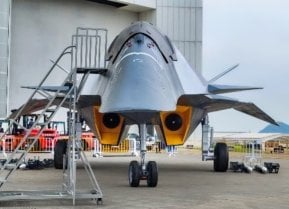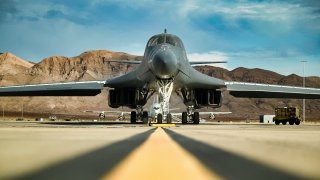Nothing Can Stop the B-1B Lancer Bomber
The B-1B Lancer, known as the "Bone," was developed during the Cold War to evade Soviet air defenses and deliver nuclear payloads deep into enemy territory. Built by Rockwell International and introduced in 1986, it combines high subsonic cruising speeds, a variable-sweep wing for supersonic capability, and a 75,000-pound ordnance capacity.
What You Need to Know: The B-1B Lancer, known as the "Bone," was developed during the Cold War to evade Soviet air defenses and deliver nuclear payloads deep into enemy territory. Built by Rockwell International and introduced in 1986, it combines high subsonic cruising speeds, a variable-sweep wing for supersonic capability, and a 75,000-pound ordnance capacity.
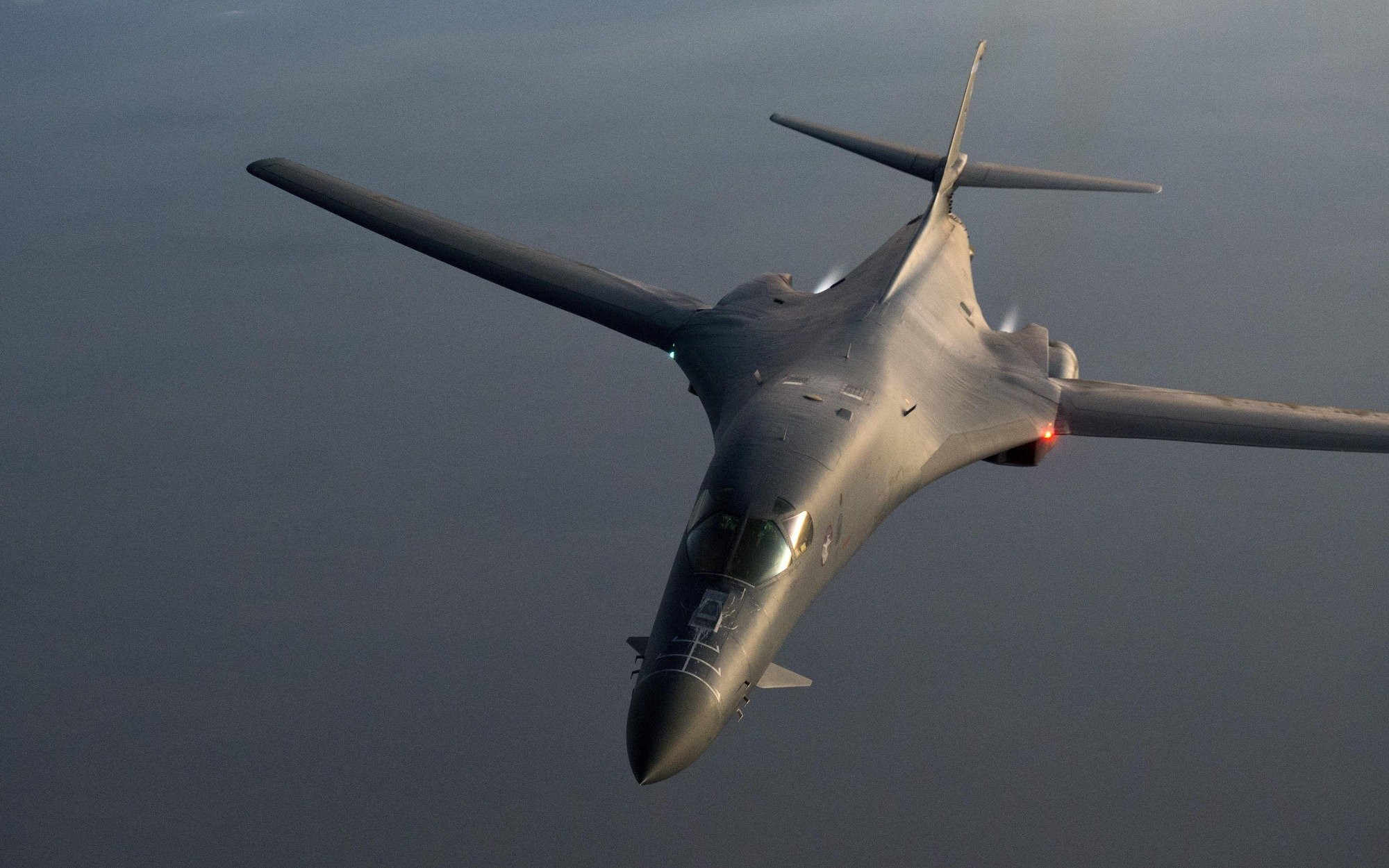
-Upgraded for precision-strike missions, the Lancer proved effective in conflicts like Iraq and Afghanistan.
-Despite its age and high maintenance, the B-1B remains valuable for penetrating modern air defenses. The Pentagon is considering retirement, but modernization could ensure its continued relevance in today’s complex threat environment.
Why the B-1B Lancer Remains Vital for U.S. Air Power
The Cold War was the defining moment for many US weapons platforms. This was true of the B-1B Lancer. Known as the “Bone” by its crews, this bird stands as a testament to the strategic concerns and ingenuity of American engineers and war planners from the heady days of the Cold War. The Bone was designed to penetrate Soviet air defenses at extremely low altitudes and high speeds.
America needed a bomber that could evade radar detection and deliver nuclear payloads deep inside of enemy territory. Originally conceived of during the presidency of Lyndon B. Johnson, the project faced numerous political and strategic shifts. Initially the B-1A was canceled in favor of the B-2 Spirt partly because technology was so rapidly changing at the time of the development of this program.
Indeed, the B-1A was originally conceived of as a replacement for the B-52 Stratofortress. Despite the fact that it was meant to replace the B-52, it never made it to reality that way. It would be several years later, in the Reagan administration, when the B-1B would come to fruition.
The B-1B Lancer can carry both nuclear as well as conventional ordnance. Rockwell International was the defense contractor that ultimately won the contract. The first B-1B took flight in 1985, entering service a year later, in 1986.
The Specs on the B-1 Bomber
A variable-sweep wring aircraft, this bird was truly optimized for performance at various speeds and altitudes. The B-1B Lancer could cruise at high subsonic speeds to reduce its fuel consumption while its swept-wing design could then allow for supersonic flight—reaching an astonishing Mach 1.2 (920 miles per hour) at sea level.
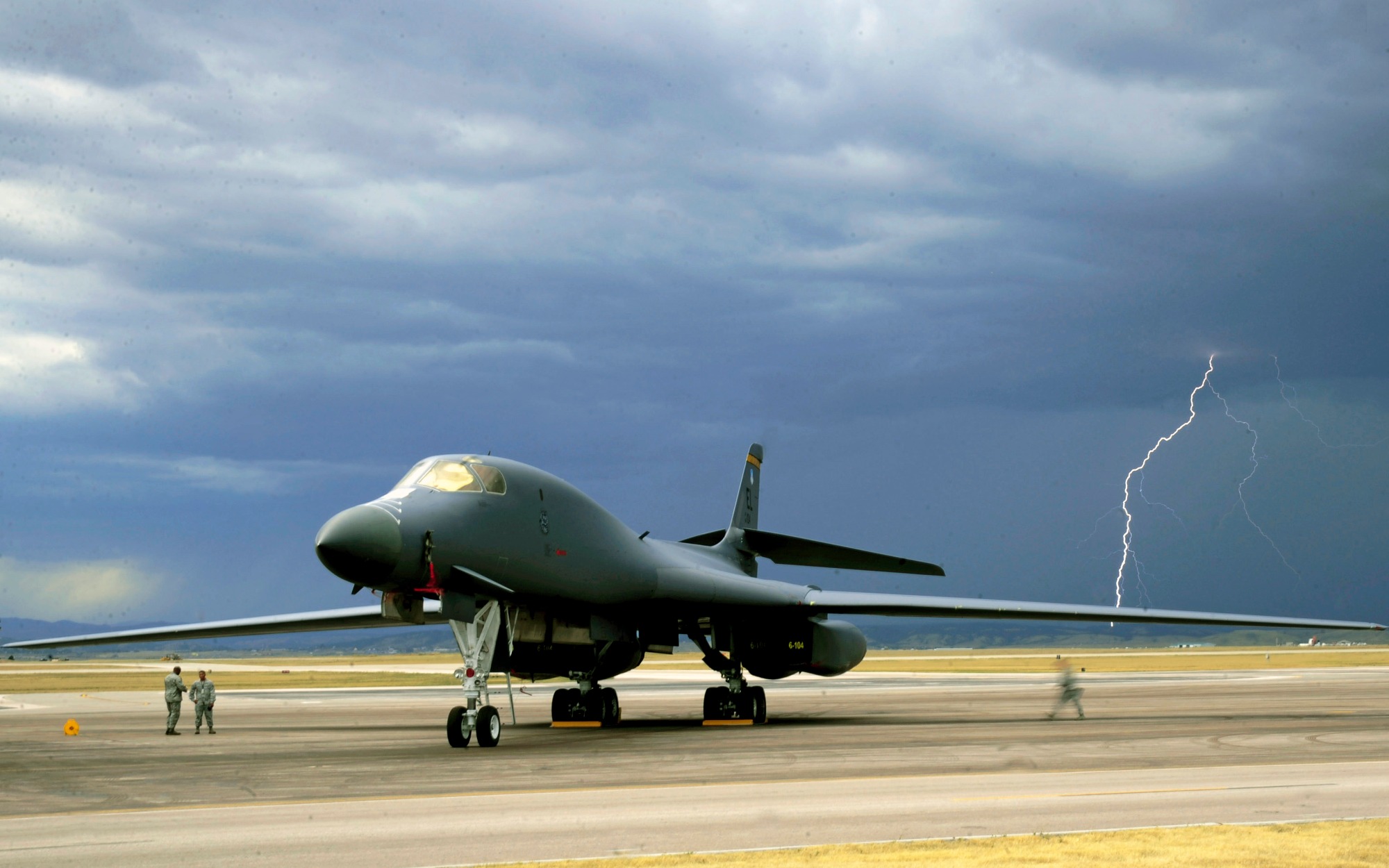
Four General Electric F101-GE-102 turbofan engines powered this warbird. This aircraft could carry 75,000 pounds of ordnance, including nuclear bombs, precision-guided munitions, and conventional bombs. Its range could be significantly extended, thanks to mid-air refueling, ensuring a truly global reach for these birds.
The B-1B was not a stealth plane, although it did enjoy the cross-pollination of concepts being explored by US defense contractors at that time. So, while the Lancer was not a stealth plane, it did have a smaller radar cross-section and other low-observable features derived from what was then ongoing stealth technology research and development in the US.
Meanwhile, these birds can deploy electronic countermeasures, helping to evade enemy radar and any incoming missiles.
The Bomber Upgrades: No More Nukes
Multiple upgrades have been made to the Lancer. Its avionics, weapons, and defenses have all been enhanced over the years. Notably, the Pentagon oversaw the installation of the Conventional Mission Upgrade Program (CMUP), which transformed the B-1B into a precision strike platform, capable of deploying GPS-guided munitions with high accuracy.
Making its debut in Operation Desert Fox over the unfriendly skies of Iraq in 1998, this bird proved to be very effective. It was again deployed when US forces invaded Afghanistan in Operation Enduring Freedom in response to al Qaeda’s attacks on the US homeland on September 11, 2001.
These birds proved highly effective in the early phases of that campaign, when US Special Forces and CIA paramilitary teams merged with local Afghan resistance fighters and utilized US airpower—as provided by the Lancers—to great effect.
The Future of This Bird
Even though the Lancer could deliver massive payloads with precision made it invaluable. This bird would go on to enjoy extensive service in Operation Iraqi Freedom because of its usefulness.
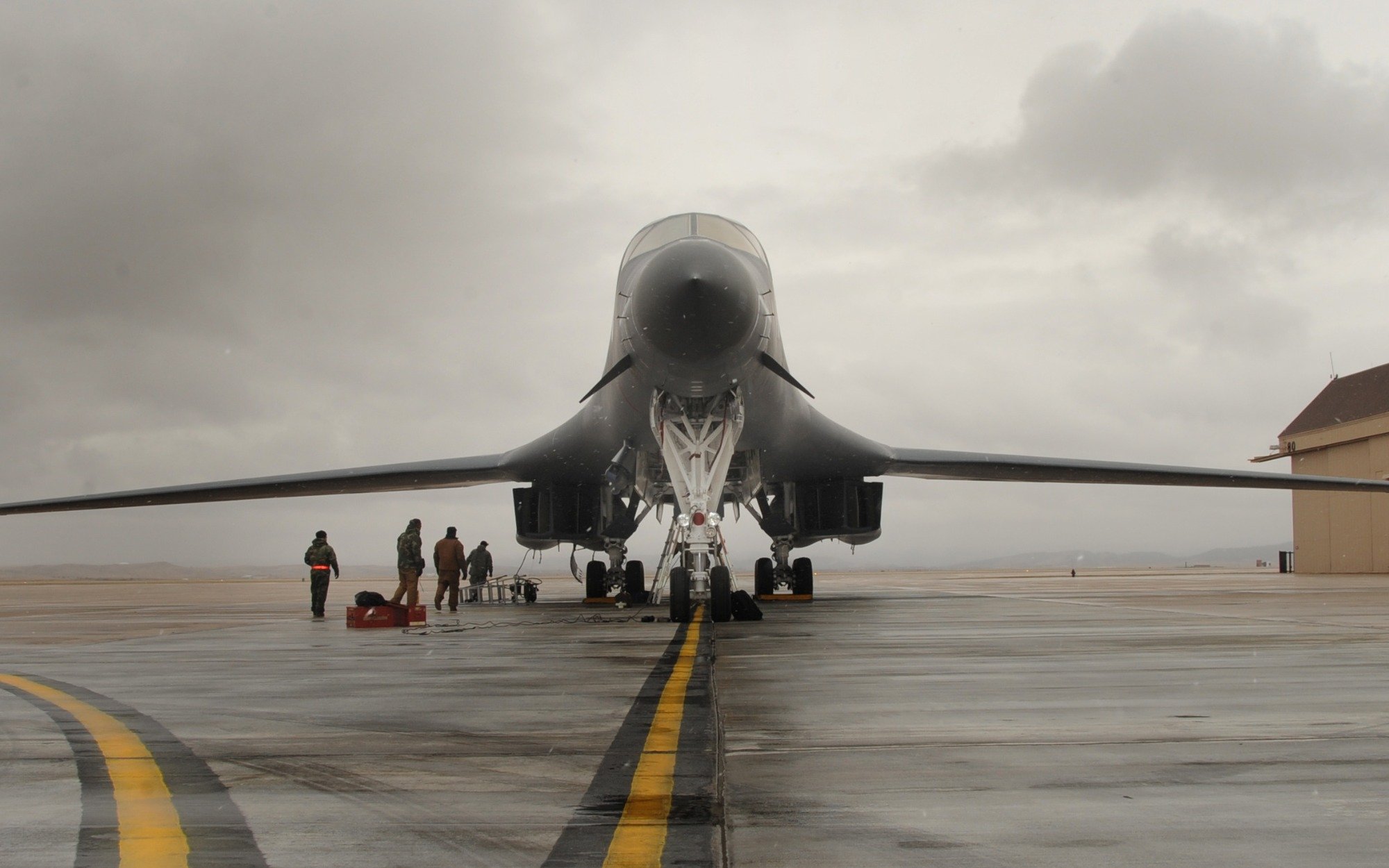
The B-1B Lancer is a highly effective airframe. Yet, it is aging. This, combined with its high maintenance costs, and fundamental changes to the way air wars are fought, have jeopardized the longevity of the B-1B.
The Pentagon is contemplating retiring these birds or engaging in significant life-extension programs—that will be costly for the aging fleet. But the fact of the matter is that this bird is fast, it can carry a massive payload, and it has range that few other assets in the Air Force’s fleet has, making this bird hard-to-replace.
Its initial foe of the Soviet Union may be dead. Yet, the B-1B Lancer has never been more relevant. Today, America is threatened as never before. It has multiple adversary with advanced anti-aircraft systems.
The B-1B can penetrate many of these air defense bubbles.
While it is a Cold War relic, with a little modifications, this bird can retain its relevancy for another several decades. It is an adaptable and successful program. Rather than ending this program, it should be extended and modernized to meet the advancing challenges posed by Russian, Chinese, Iranian, North Korean, and even Venezuelan air defenses.
Author Experience and Expertise: Brandon J. Weichert
Brandon J. Weichert, a National Interest national security analyst, is a former Congressional staffer and geopolitical analyst who is a contributor at The Washington Times, the Asia Times, and The-Pipeline. He is the author of Winning Space: How America Remains a Superpower, Biohacked: China’s Race to Control Life, and The Shadow War: Iran’s Quest for Supremacy. His next book, A Disaster of Our Own Making: How the West Lost Ukraine, is due October 22 from Encounter Books. Weichert can be followed via Twitter @WeTheBrandon.
All images on the page come from Shutterstock or Creative Commons.
From the Vault
Russia Freaked Out: Why the U.S. Navy 'Unretired' the Iowa-Class Battleships
Battleship vs. Battlecruiser: Iowa-Class vs. Russia's Kirov-Class (Who Wins?)
